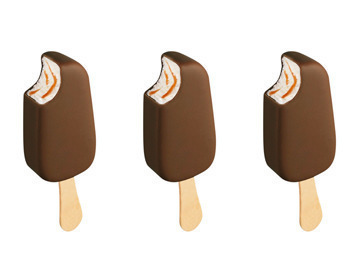 Anonymous Company
Anonymous Company
|
Next Challenge: How can we improve the DIY lawn care experience? |

We're a multinational foods manufacturer that produces a popular brand of hand-held ice cream snacks. These snacks include a hard chocolate coating, which should remain perfectly smooth and free of imperfections while being transported to distributors and grocery stores.
Currently, cracks in this chocolate shell occur frequently due to changes in altitude (>+ 500m) between shipping destinations. These cracks most commonly occur at the product’s corners (which are thinnest and stressed most) for the following reasons:
1) When ice cream is exposed to vacuum pressures of between 50-100mbar (equivalent to an altitude increase of +500 to +1000m) the ice cream expansion exerts a force on the chocolate shell and this is sufficient to cause it to crack.
2) When ice cream is transported from high to low altitude, atmospheric pressure increases. As atmospheric pressure increases, ice cream contracts. As ice cream contracts, it shrinks away from the inside of the chocolate shell and it is no longer able to support the chocolate. Without the ice cream providing support, the chocolate shell becomes vulnerable to cracking and is sensitive to mechanical loads such as compression (due to ice creams stacked on each other in freezer cabinets) and impacts (due to collisions between products in distribution / loading in to freezer cabinets)
Please submit the following:
1) Propose a written solution to prevent or reduce the cracking of this chocolate shell coating.
2) Attach an artistic rendering (sketch, mockup, design, etc.) and any mathematical work (if needed) to illustrate the execution of your solution.
CRITERIA:
Potential solution routes may include, but not limited to:
1) Changing to another package type
2) Adjusting transportation methods to something other than truck or rail
3) Allowing for two-way gaseous movement (e.g. creating micro-leaks which allow oxygen back into package)
4) Pressurizing the shipping container
-
Submissions will be graded on the following criteria:
- Meets Deliverables
- Creativity
- Clarity
will receive $150 each
will receive $50 each
| $150.00 |

|
Oscar Deng University of Florida | |
| $150.00 |

|
Nathan Wu University of Florida | |
| $150.00 |

|
Matthew Allan Purdue University | |
| $150.00 |

|
Ryan Murphy Purdue University | |
| $150.00 |

|
Robert Anderson Grand Valley State University | |
| $50.00 |

|
Marc Shively Pennsylvania State University | |
| $50.00 |

|
Benjamin Johnson Full Sail University | |
| $50.00 |

|
Monica Black Georgia Institute of Technology | |
| $50.00 |

|
Erin Lamb California Institute of Technology | |
| $50.00 |

|
Guy Davis Maricopa Community College District |